While all geckos are lizards, not all lizards are geckos. If you have been wondering what the difference is between geckos vs lizards, you’re in the right place. Geckos are members of the Gekkonidae family, while lizards are members of the Lacertidae family. But this is only the beginning of their differences.
If you have always wanted to learn the differences between geckos and other species of lizards, you’re in the right place. In this article, we will go over some of the key differences between geckos and lizards, as well as what you can expect from a pet gecko vs other pet lizards. Let’s dive in and learn more now.
Comparing Gecko vs Lizard
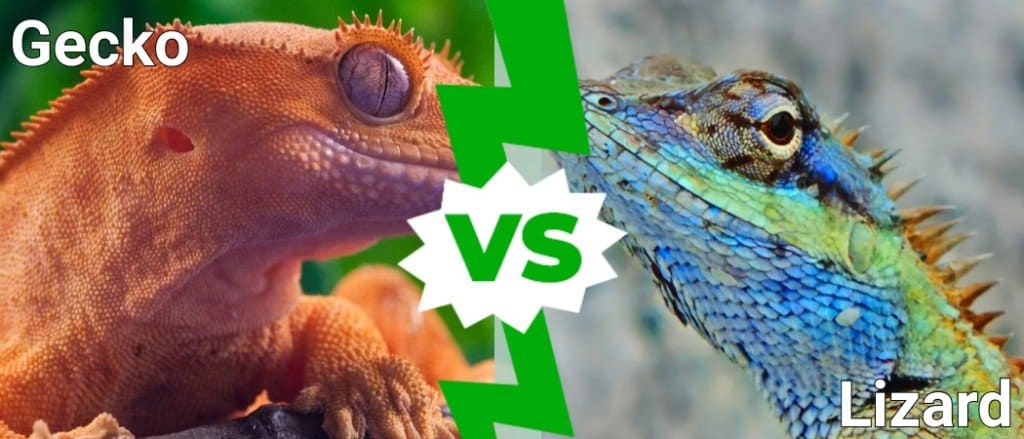
| Gecko | Lizard |
|---|---|
| Size 7-12 inches | 1 inch to 10 feet |
| Appearance Sticky feet and toes, no eyelids, often brightly colored and patterned | Eyelids, ranges in color and pattern, but often found in browns and grays |
| Diet Any insect that is smaller than them | Insects, plant matter, small mammals, large mammals |
| Lifespan 10-15 years | 5-30 years, depending on species |
| Habitat Arid climates, moist areas- very adaptable | Depends on species |
| Reproduction Lays eggs in pairs; multiple clutches per year | Depends on species, but usually lays more than two eggs at once |
The Main Differences Between Gecko vs Lizard
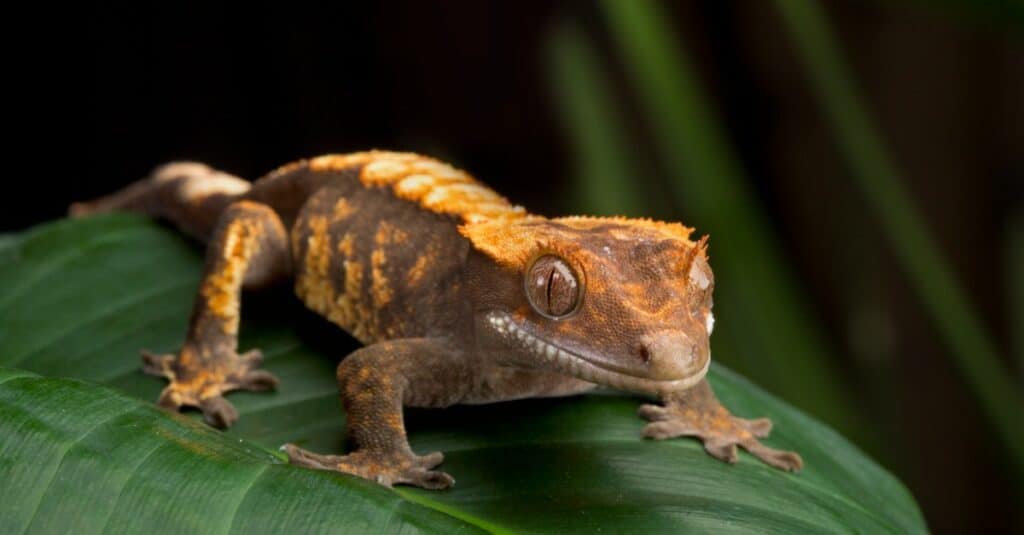
Some lizard species lay egg clutches of over 5 eggs at a time, while geckos only lay their eggs in singles or pairs.
©iStock.com/jamcgraw
There are many key differences between a gecko vs lizard. While all geckos are considered lizards, not all lizards are geckos. Some lizard species lay egg clutches of over 5 eggs at a time, while geckos only lay their eggs in singles or pairs. Geckos are unique from lizards in that they have especially sticky feet and toes; many lizards do not share this feature. Many lizards are also more carnivorous than geckos are, while geckos are considered insectivorous almost exclusively.
There are many other differences between the average gecko and the average lizard. Let’s take a look at some of those differences in more detail now.
Gecko vs Lizard: Appearance
The first difference when it comes to geckos vs lizards lies in their overall appearance. Geckos are usually small, less than a foot in length, while many other species of lizard can be as large as ten feet in length. Geckos are easily recognizable by their developed feet and adhesive toe pads; few other lizard species have fully formed toes like gecko toes.
Geckos are also often found in bright colors and patterns, while many lizard species are found in brown and gray colors to best blend in with their environment. Leopard geckos, an extremely popular pet lizard, are known for their trademark soft yellow skin with brown spots. Many lizard species are solid colors, while geckos sport patterns often.
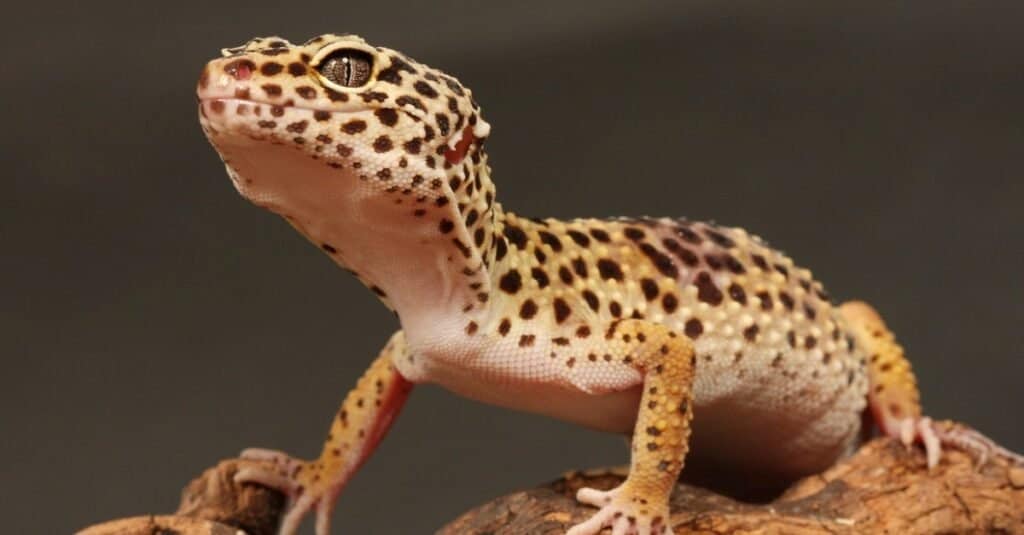
Geckos are usually small, less than a foot in length, while many other species of lizard can be as large as ten feet in length.
©iStock.com/LeitnerR
Gecko vs Lizard: Habitat
Another key difference between geckos vs lizards lies in their preferred habitat. Geckos enjoy a wide variety of habitats and seem capable of adapting faster than other lizard species. However, most enjoy arid and warm climates, which doesn’t make them very different from other species of lizard.
Some lizards can only live exclusively in desert climates or watery areas, while geckos can survive in both of these areas. However, it will ultimately depend on the species of gecko or lizard as to which habitat it prefers and can thrive in.
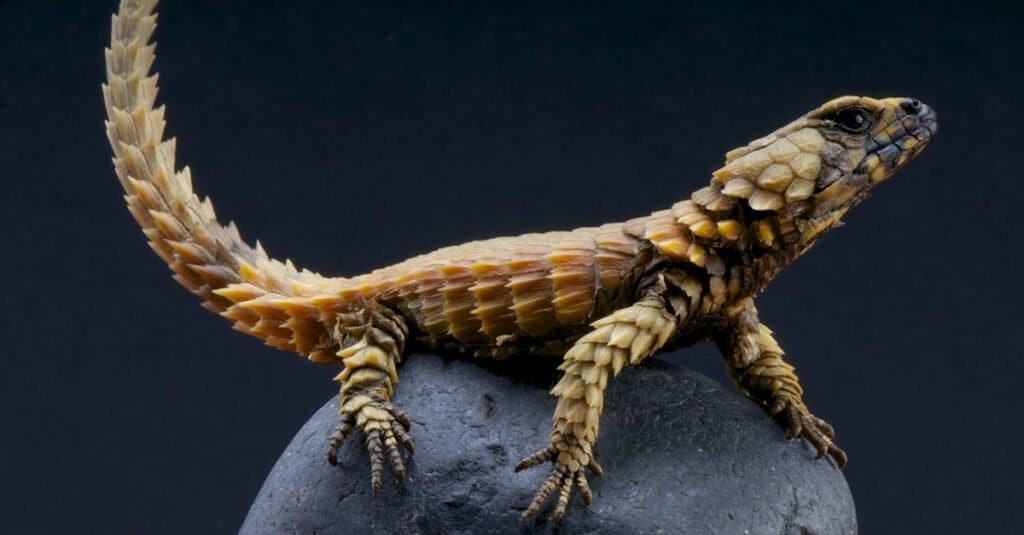
Geckos are also often found in bright colors and patterns, while many lizard species are found in brown and gray colors to best blend in with their environment.
©reptiles4all/Shutterstock.com
Gecko vs Lizard: Diet
Another difference that geckos have when compared to lizards is their diet. While all lizards seem to enjoy a nice insect from time to time, geckos eat insects exclusively. Some lizard species are far more carnivorous than the average gecko, eating small mammals while a gecko chooses crickets.
However, it depends on the species of lizard as to what its diet is specifically. Not all lizards can eat deer like a Komodo dragon can, but geckos would never dream of eating anything other than a hearty helping of bugs! Geckos are also incapable of eating any insects that are larger than them, given their inability to take a bite of their food. Like some lizards, geckos eat their food whole, so it is important that they don’t eat anything too large.
Gecko vs Lizard: Lifespan
When it comes to average lifespans, geckos and lizards differ slightly. The average gecko, both in the wild and in captivity, lives anywhere from 10-25 years at most, while some lizards have been known to live well over 30 years. While it depends on the specific species, larger lizards tend to live longer than smaller lizards, like the gecko.
Some smaller geckos don’t live as long as ten years, though many pet geckos reach this age. However, there are many species of lizard that also don’t live very long, making them similar to smaller geckos in this way.
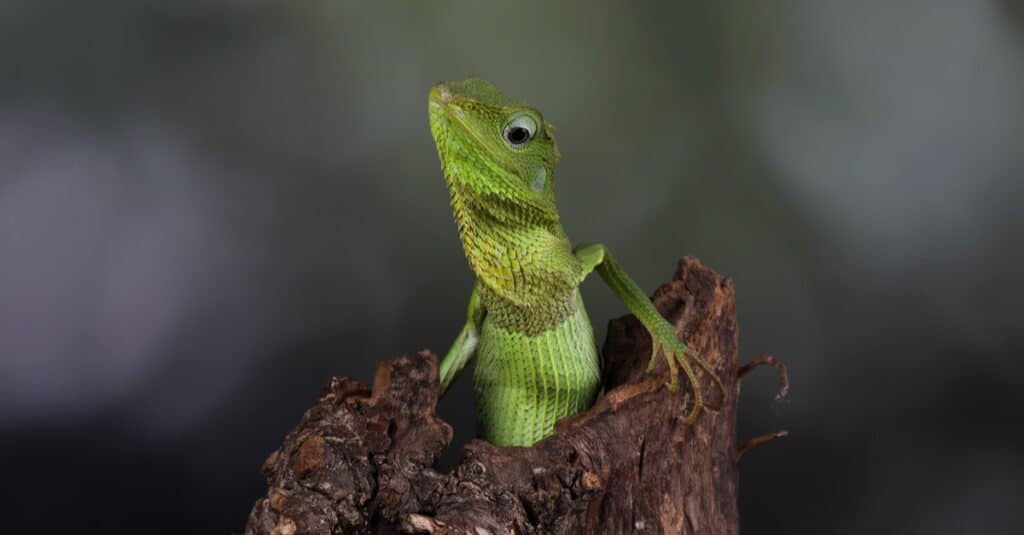
Some lizards can only live exclusively in desert climates or watery areas, while geckos can survive in both of these areas.
©Lauren Suryanata/Shutterstock.com
Gecko vs Lizard: Reproduction
Another key difference in the gecko vs lizard debate has to do with the reproductive style of these two reptiles. The average lizard lays multiple eggs at a time, anywhere from 4-25, while geckos only lay one or two eggs at a time. All lizards can have multiple eggs throughout the year, also known as clutches. However, geckos rarely lay more than two eggs per clutch.
This is a key difference that geckos have when compared to other species of lizard. While it may not seem as though geckos lay enough eggs to maximize their species, they live long lives. Geckos likely make up for their small clutches through birthing multiple clutches throughout the year.
The photo featured at the top of this post is © reptiles4all/Shutterstock.com
Thank you for reading! Have some feedback for us? Contact the AZ Animals editorial team.






